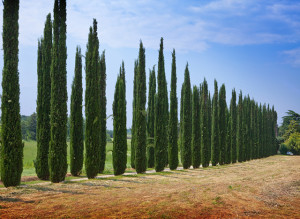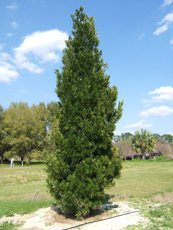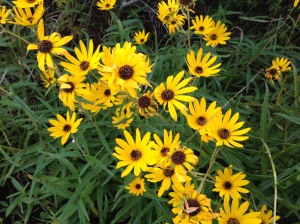A: The best method of weed control is to maintain a healthy, vigorous turf. Following UF/IFAS recommendations for proper fertilization, irrigation, and mowing will help to maintain a healthy lawn that is able to outcompete most weeds. However, if weed problems persist, the following chemical treatments may be used on bahiagrass for weed control when needed. Post-emergence herbicides are applied to weeds presently growing, it does not control seeds. Post-emergence herbicides (e.g., 2,4-D, dicamba, and/or MCPP) should be applied in May as needed for control of annual and perennial broadleaf weeds, such as knotweed, spurge, and lespedeza. Selective control of emerged grass weeds, such as goosegrass, crabgrass, or alexandergrass, can only be achieved by hand pulling. Sedges can be controlled with applications of halosulfuron. Drop off samples of your weeds for positive identification before applying herbicides. This is important to avoid improper application which wastes money and time – it does not help the environment either. Apply herbicides only when adequate soil moisture is present, air temperatures are between 60°F and 85°F, and the turf is not suffering from water or mowing stress. Failure to follow these precautions will result in damaged turf. For information on controlling weeds in the lawn, please refer to ENH884, Weed Management in Home Lawns, (http://edis.ifas.ufl.edu/ep141). Many popular “weed-n-feed” fertilizers for home lawns contain the herbicide atrazine or metsulfuron. Both of these herbicides will damage bahiagrass; therefore, we do not recommend using weed and feed products on bahiagrass. For these reasons it is critical to read the herbicide label. Remember – “the label is the law.”
Monthly Archives: November 2016
Q: My Italian cypress is dying and I want to replace it with a shrub that will stay thin. Can you recommend something?
A: It is not uncommon for Italian cypress to start showing limb dieback especially if they are in the same irrigation rotation as lawns. These plants are drought tolerant and really do not need to be irrigated weekly. My first thought is for you to consider a specific cultivar of podocarpus called Podocarpus macrophyllus var. angustifolius. This particular plant is a narrow, columnar tree with curved leaves, 2 to 4.5 inches long. It is very hardy but you will need to cap the irrigation head for this area so it will also not develop disease issues.
Q: What is the bright yellow flower growing in the ditches now?
A: Swamp Sunflower, Helianthus angustifolius, is a Florida native upright perennial potentially growing to heights of 4 feet or more. The dark green leaves are narrowly lanceolate and may reach a length of 8 inches. This spectacular fall bloomer bears yellow flowers with dark yellow or brown disks. In cold hardiness zone 8 seeds can be planted between May and July; for zone 9 planting times occurs April through August. Swamp Sunflower grows best in full sun to partial shade and can be planted in a well-drained soil although it is native to low wetland areas. It appears to have fairly good tolerance to planting in typical garden soil but benefits from some irrigation in dry weather. If grown in partial sun, pinch plants twice in early summer to encourage branching. Swamp sunflower responds well to regular applications of fertilizer. Many plantlets develop around the base of the Swamp Sunflower; divide it yearly to gain more plants. Propagate by seed. Swamp Sunflower is susceptible to powdery mildew and spittle bugs.




